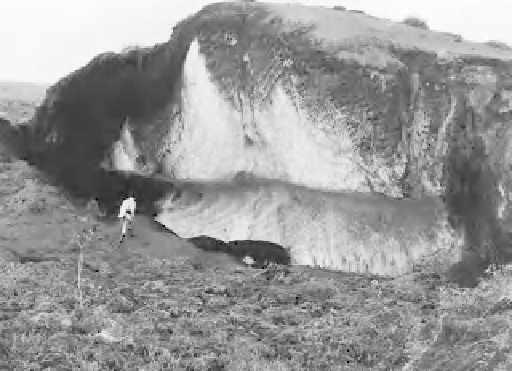Geology Reference
In-Depth Information
All pingos contain pore ice and varying proportions of intrusive and segregated ice.
According to Mackay (1985a), the majority of growth is by ice segregation. In the early
stage of pingo growth, as the recently-drained lake bottom begins to freeze, pore ice forms
and the entire lake bottom heaves upwards. This is what was observed at the Illisarvik
drained-lake site during the fi rst 6 years of observation (see Chapter 5). Then, as perma-
frost continues to aggrade in the coarse-grained water-saturated sediment that underlies
the basin, pore-water expulsion occurs (see Chapter 4). Segregated ice forms when hydro-
static pressure equals or exceeds overburden pressure, and uplift of the pingo, senso stricto,
commences. Intrusive ice is associated with the freezing of the sub-pingo water lens. At
that stage, pore water in the unfrozen and unbonded sand beneath the water lens remains
at or below 0 °C because of a freezing-point depression. Using the opportunity of a rare
pingo-ice exposure, Mackay (1990b) has described how seasonal-growth bands, consisting
of alternating clear and bubble-rich bands, form in the intrusive ice (Figure 6.15). These
Figure 6.15.
Seasonal-growth bands in pingo ice. (A) Oblique air view of pingo 20, Tuktoyaktuk
Peninsula, Canada (see Mackay, 1990b, 1998), showing exposure of the ice core. (B) Seasonal
banding in the ice core. Note the person for scale. Both photos were taken in August 1988.



